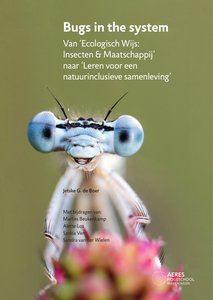Systemic sclerosis (SSc) is an autoimmune disease which is characterized by vasculopathy, tissue fibrosis and activation of the innate and adaptive immune system. Clinical features of the disease consists of skin thickening and internal organ involvement. Due to the heterogeneous nature of the disease it is difficult to predict disease progression and complications. Despite the discovery of novel autoantibodies associated with SSc, there is an unmet need for biomarkers for diagnosis, disease progression and response to treatment. To date, the use of single (surrogate) biomarkers for these purposes has been unsuccessful. Combining multiple biomarkers in to predictive panels or ultimately algorithms could be more precise. Given the limited therapeutic options and poor prognosis of many SSc patients, a better understanding of the immune-pathofysiological profiles might aid to an adjusted therapeutic approach. Therefore, we set out to explore immunological fingerprints in various clinically defined forms of SSc. We used multilayer profiling to identify unique immune profiles underlying distinct autoantibody signatures. These immune profiles could fill the unmet need for prognosis and response to therapy in SSc. Here, we present 3 pathophysiological fingerprints in SSc based on the expression of circulating antibodies, vascular markers and immunomodulatory mediators.
DOCUMENT
Dit is alweer de vijfde editie van het congres Met het oog op behandeling. De afgelopen jaren hebben we gezien dat de maatschappelijke belangstelling voor mensen met een licht verstandelijke beperking (LVB) sterk toeneemt. Dit jaar is er zelfs een Interdepartementaal Beleidsonderzoek gedaan door diverse ministeries over de positie van mensen met een LVB in de Nederlandse samenleving. In het onderzoeksrapport wordt gepleit voor het verbeteren van de communicatie tussen algemene voorzieningen en deze burgers. Voor alle professionals in het brede sociaal domein wordt aanbevolen dat zij meer kennis en vaardigheden moeten hebben voor hun hulp- en dienstverlening aan mensen met een LVB. Dat geldt voor alle professionals in het sociaal domein en in het bijzonder voor professionals die werken voor cliënten met een LVB waarbij sprake is van ernstige gedragsproblematiek en psychische problemen. In dat geval moet je kunnen omgaan met ‘onbegrepen gedrag’ en agressie en wil je beschikken over de beste, actuele kennis op dat gebied.
DOCUMENT

Deze publicatie bestaat uit twee delen: eerst een terugblik op de lectoraatsperiode van 2020-2024. In 'Ecologisch Wijs : Insecten & Maatschappij' speelden insecten een belangrijke rol in het leggen van de verbinding tussen ecologie en educatie. Insecten zijn bijzonder waardevol om begrippen in de ecologie mee uit te leggen. Een uitgebreid deel van de tekst is gewijd aan insecten zodat de lezer meer waardering krijgt voor deze fascinerende dieren. Het maatschappelijke dilemma van het versterken van insectenbiodiversiteit enerzijds en het beheersen van plaaginsecten anderzijds wordt toegelicht. Vervolgens worden de doelstellingen van het lectoraat besproken en een aantal van de opbrengsten van het onderzoek. Het tweede deel van de publicatie is een contourschets van het thema voor de nieuwe lectoraatsperiode 'Leren voor een natuurinclusieve samenleving'.
DOCUMENT
